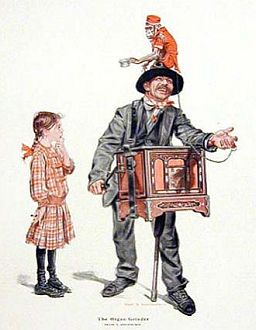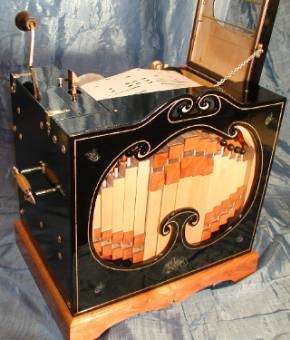Back in Victorian days, when there was no TV, radio, record players, or CDs, the only music that people heard was that provided by the church organ, the local fiddler or perhaps brass bands. Occasionally there might be a concert in the Town Hall, or someone playing a penny whistle, but - musically - the world was much quieter than today. It would be a great novelty therefore, when visiting the local village or town, to hear music provided by a busker carrying his 'magic' box, and to see a monkey being used to collect money.
There were a number of companies - mainly on the Continent - who produced the organs used by these buskers, and some have survived and are still in use today. When John made his version for his grandson, he retained the use of a paper roll, punched with holes, to provide the 'music', but simplified the design, by using the holes to control the air flow to the organ pipes directly, rather than by using valves. This simplification, and the use of balsa wood for the pipes, makes construction of the organ a relatively simple task. There is one critical feature of organ pipes, however, and that is the size of the gap through which the air is blown to make the pipe sound. John solved the problem of getting this correct by the clever use of small pieces of cardboard cut from a cereal packet! The Busker organ is designed to be as light as possible, with its handle easy to turn as the instrument is carried around. The handle works the bellows inside the case, and also controls the movement of the paper roll.


